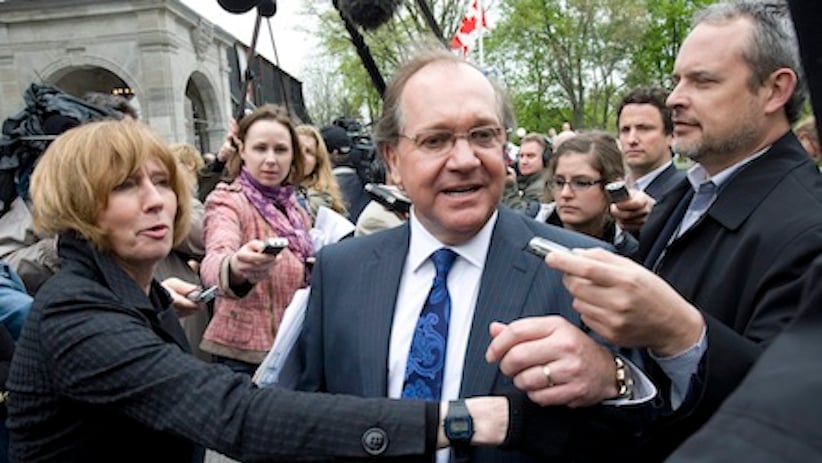First Nations transparency: a deeper look at chiefs’ earnings
Search our database of salaries and remuneration
Minister of State (Atlantic Canada Opportunities Agency) Bernard Valcourt speaks with media after being sworn in at a ceremony at Rideau Hall in Ottawa, Wednesday May 18, 2011. THE CANADIAN PRESS/Adrian Wyld
Share

Darcy Bear was the best Aboriginal ally the Conservative government had for its push to compel First Nations to publicly disclose details of their finances. Bear is the chief of the Whitecap Dakota First Nation. In 2010, his reserve was the backdrop for the launch of a private member’s bill that hoped to impose new disclosure rules on bands recognized by the Indian Act. That bill died on the order paper, but the Tories took the issue under their wing. They tabled C-27 in late 2011, a bill that would force bands to publicly reveal the salaries of their chiefs and councillors. By the time the legislation arrived at committee in October 2012, Bear was there to lend his support.
His story is worth telling. He took over as chief of the southern Saskatchewan band in 1991, when he was only 23 years old. The band’s books were in bad shape, and his people were on the brink of third-party management. Two decades later, the Whitecap Dakota are in the black. Bear spoke of plans to build a hotel and a business park. His band even operates a golf course. Bear earns a tidy sum, as do the band’s two elected councillors. “We have been able to generate a lot of our own-source revenues, so we can top up salaries and make sure we can be competitive,” he told the aboriginal affairs committee.
Bear said he’s happy to disclose his own salary, and pointed out that he has no say in his own paycheque. “We actually have a chief and council compensation commission in our community that’s made up of our membership,” he says. “They set our salaries; we don’t set our salaries.” Fast forward two years, and now we all know Bear’s salary last year: $129,519, plus $14,860 in benefits. We also know that his two councillors, Frank Royal and Dwayne Eagle, each took home $102,473 (plus benefits).
That’s the story of one band among more than 500 that have sent their books to Ottawa. My colleague, John Geddes, wrote about what it means that every Canadian knows the salary of every chief in the country—and what the numbers really tell us. Here, you can browse the full database of chiefs’ earnings. We list base salary as well as total remuneration, which takes into account additional income, benefits and expenses.* The database is also searchable and sortable.
[rdm-footable id=’249′]
CORRECTION: Our database originally contained incorrect salary information for Bonaparte First Nation and Montagnais de Natashquan. We regret the errors.